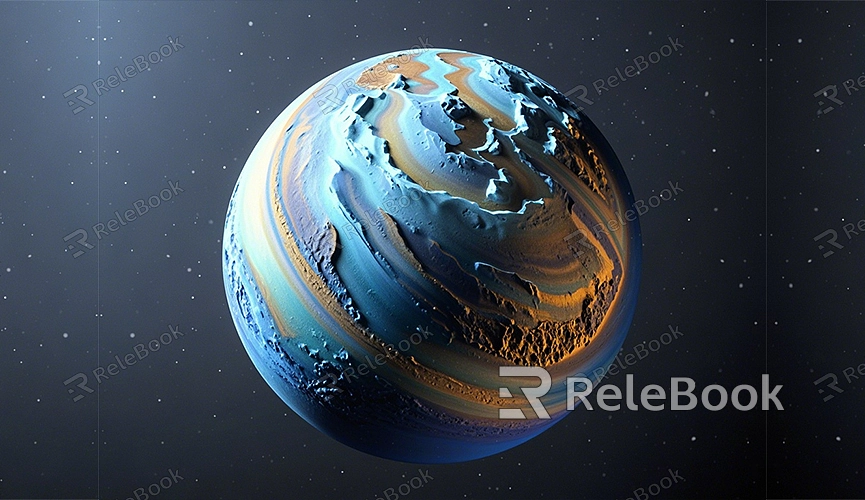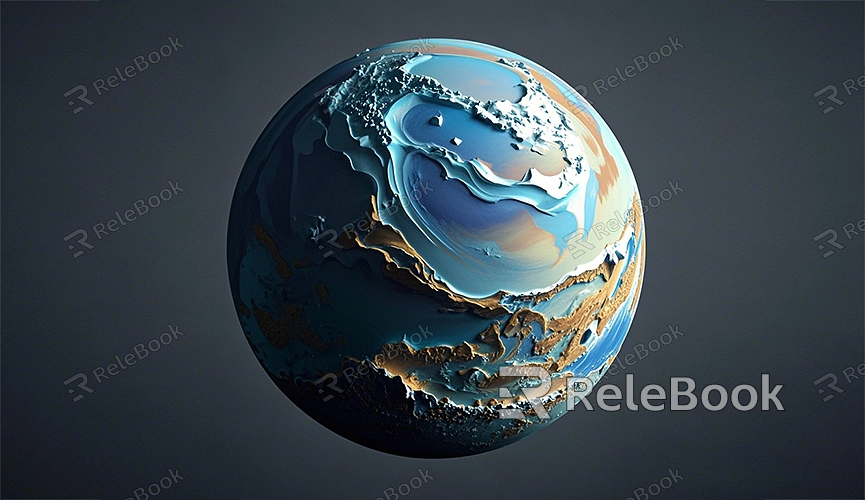How to Make a 3D Model of Pluto
Pluto, once considered the ninth planet, has captured the interest of astronomy enthusiasts and researchers alike in recent years. Creating a 3D model of Pluto not only aids in understanding this distant celestial body but also serves educational and visual presentation purposes. This guide will detail the process of making a 3D model of Pluto using Blender, covering modeling, texturing, and rendering steps.
Preparation
Before starting the 3D modeling process, ensure you have Blender installed—an advanced open-source 3D modeling software. Accurate modeling of Pluto requires referencing scientific data to represent its surface features and structure correctly.

Creating the Basic Model of Pluto
Add a Sphere
1. Create a Sphere: In Blender, start by creating a sphere to serve as Pluto's basic model. In the 3D view, go to the “Add” menu, select “Mesh,” and then choose “UV Sphere.” This sphere will represent the overall shape of Pluto.
2. Adjust Size: Select the sphere object and use the “Scale” (S) tool to adjust its size. Scale the sphere to reflect Pluto's actual size, ensuring it is proportionate for comparison with other celestial bodies.
Apply Surface Textures
1. Find Texture Resources: Pluto's surface features include complex terrains like icy plains, mountains, and craters. High-quality textures can help simulate these features. If you need high-quality 3D textures and HDRIs for your models and virtual scenes, you can download them for free from [Relebook](https://textures.relebook.com/), which offers a wealth of premium 3D resources.
2. Add Material: In Blender, assign a new material to the sphere. In the “Material” panel, click the “New” button to create a material for the sphere. Then, in the “Shader Editor,” connect the texture image to the “Base Color” node. This will apply Pluto's surface texture to the model.
3. Adjust Texture Coordinates: To ensure the texture maps correctly onto the sphere, you may need to adjust the texture coordinates. In the “UV Editor,” unwrap the sphere’s UV map and adjust it to fit the actual texture details.
Add Details and Features
1. Sculpt Details: Pluto’s surface has many subtle geological features that can be added using Blender’s sculpting tools. In “Sculpt Mode,” choose appropriate brushes to gradually add mountains, craters, and other details, making the model more realistic.
2. Optimize the Model: After sculpting details, use the “Subdivision Surface” modifier to smooth the model’s surface and improve its visual quality. Adjust the subdivision levels to ensure a smooth and natural-looking surface.

Rendering the Pluto Model
Set Up Scene and Lighting
1. Add Lighting: To make Pluto's model more vivid, add suitable light sources to the scene. In the “Add” menu, select “Light” and add point lights, directional lights, or spotlights as needed. Adjust the position and intensity of the lights to achieve the best rendering effect.
2. Set Background: Enhance the overall effect by adding a background. In the “World” panel, set the background color or use an HDRI image to simulate a real space environment. For high-quality HDRI images, visit [Relebook](https://textures.relebook.com/).
Render Settings
1. Configure Render Parameters: In the “Output Properties” panel, set the resolution and format for rendering. Choose a resolution such as 1920x1080 and set the output format to PNG or JPEG. Adjust other render settings, like sample count and ray tracing options, to optimize render quality.
2. Start Rendering: Click “Render Image” in the “Render” menu. Blender will generate a high-quality image of the Pluto 3D model. The rendering process may take some time depending on the model's complexity and settings.
By following these steps, you can create an accurate and detailed 3D model of Pluto. This process includes creating the base model, applying surface textures, refining details, and rendering the final image. Mastering these techniques will allow you to produce scientifically valuable models and provide high-quality visual effects for various projects.
If you need high-quality 3D textures and HDRIs for your models and virtual scenes, download them for free from [Relebook](https://textures.relebook.com/). For exquisite 3D models, visit [Relebook](https://3dmodels.relebook.com/), which offers a range of premium 3D resources. Utilizing these resources will help you enhance your 3D model’s quality, making it more professional and realistic.

